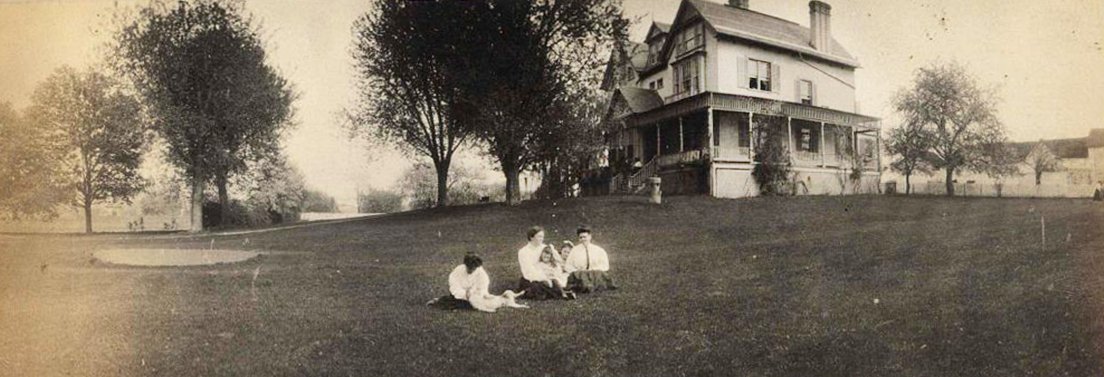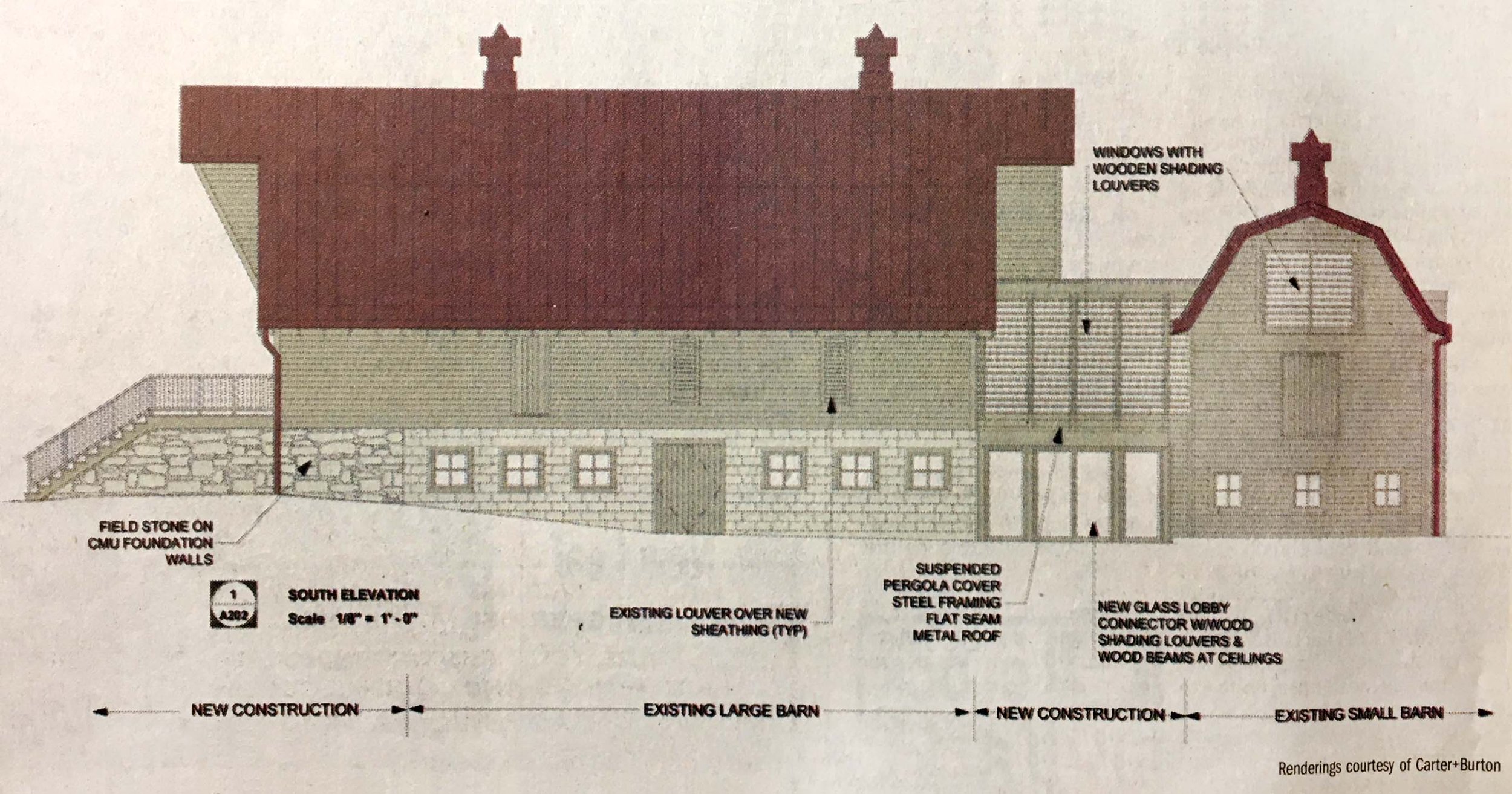OUR MISSION
About
Our Mission & History
FAQs & Accessibility
Our Team & Partners
Barns of Rose Hill is a 501(c)(3) nonprofit arts venue and community center in historic Berryville, Virginia. It is our mission to enrich lives through arts, education, and community. We see the arts as a path to learning, to shared experience, and to building community. The Barns of Rose Hill is housed in what was once two dairy barns, fully restored in 2011. Throughout the year, we bring over 100 programs to the Northern Shenandoah Valley and welcome thousands of visitors annually.

OUR HISTORY
A Gift to Berryville
Horace G. Smithy donated the “Rose Hill” estate to the Town of Berryville on July 16, 1964 in honor of his late wife, Rosalie McCormick Smithy, to be used for “the educational, recreational and cultural benefit of the community.” Forty-seven years later, Barns of Rose Hill opened as a cultural arts and community center, thereby, fulfilling Mr. Smithy’s vision. The estate – situated in the heart of downtown Berryville – consisted of a mid-19th-century brick mansion said to be “the centerpiece of Berryville” as well as two dairy barns built in the early 1900s, a tenant house, and 3 1/2 acres of land.
Barns of Rose Hill wouldn’t exist today without the vision and tireless efforts of a dedicated team of “barns raisers” and our community who oversaw the project – from raising the capital campaign funds through construction – to restore and renovate two old dairy barns into a modern performing arts and community center.
From Farm Estate to Cultural Arts Center
The Town of Berryville turned part of the land into Rose Hill Park and the mansion was used sporadically for art classes and community events. Over the years, there were on-again-off-again plans to convert the mansion into an arts center and home to the library and the barns were to become a teen center but the small town lacked the necessary funds for the renovations. After a time, the mansion was left vacant until it was destroyed by a fire in 1978.
After the mansion burned, the focus turned to transforming the two old barns into a teen center, yet the two structures fell into major disrepair over time due to lack of funds for renovations.
Renewed Vision
As the town developed around the old barns and the Rose Hill Park grounds, a dedicated group of community members joined forces to move the restoration of the barns forward to create a center for cultural arts and community as the Smithy family envisioned.
In September 2004, Barns of Rose Hill, Inc. was formed as a 501(c)(3) nonprofit organization and a capital campaign was launched to raise funds for the restoration of the two historic barns to create a center for community, arts, and education.
Raising Funds for Restoration
Community members and donors – affectionately called the “Barns Raisers” – worked tirelessly fundraising for the capital campaign as well as planning the restoration and construction project. After six years of fundraising and community outreach, the capital campaign raised more than $2 million from public and private funding for the restoration and renovation of the barns into a multi-use facility.
Architectural Design
Carter+Burton, an architectural firm in Berryville, developed an architectural design that retained the historic structures and charm of the Barns while inserting the necessary amenities and elements required for a modern-day community center and performing arts venue.
They developed a highly flexible architectural concept that would allow the building to hold concerts, exhibits, classes, meetings, films, and community events. A key design and construction component included the architectural acoustic engineering of the upper part of the large barn that would become the main performance hall. The design called for a new addition between the two barns that would join the structures into one building.
Renovation & Restoration Process
As the project entered the construction phase, Berryville resident Stan Kerns was selected as the Project Manager. To convert the barn structures into a cultural arts center and visitor center, the buildings needed to be completely overhauled to become architecturally safe and to meet code.
Starting in 2010, H&W Construction Company performed the repair and renovation of the two barn structures. One of the biggest obstacles was to initially disassemble sections of the barns while keeping its structure in place. Construction was complete by the end of the summer of 2011.
Historic Barns with Modern Amenities
Barns of Rose Hill officially opened its doors on September 6, 2011.
The essential character of the barns was preserved with the original roof lines and high lofted ceilings on the upper level, reclaimed barn wood on the interior walls, wood and concrete floors, and the restoration of the original cupolas and weather vanes on the roof. The parts of the original molded stone foundation are visible inside the downstairs lobby as well as outside of the large barn.
The extensive renovation included a world class sound system, acoustic engineering, and a highly flexible architectural concept. Our two-story building now includes Upper and Lower galleries, the James. R. Wilkins, Sr. Great Hall, and open deck. Our elevator offers accessibility between the lower and upper levels.
Originally part of a 100-acre estate, Rose Hill was built in the mid-19th century by Dr. S.S Neill, a surgeon in the Confederate Army.
Following the Civil War, the property was purchased by Marshall McCormick, a lawyer who would go on to become a mayor of Berryville, the Commonwealth’s attorney of Clarke County, and a Virginia State Senator. McCormick owned large parcels land in Clarke County including Annfield, Clermont, and Norwood farms. McCormick enlarged and renovated the house and changed its façade to have a Victorian appearance.
In 1911, McCormick’s daughter, Rosalie, married Horace Gilbert Smithy. Soon afterward, Smithy purchased Rose Hill from his father-in-law. Although they lived in Washington, DC, Horace and Rosalie continued to use Rose Hill as their summer home. After Rosalie died in 1963, Horace donated the Rose Hill property in 1964 to the town of Berryville to be used in her honor for “the educational, recreational and cultural benefit of the community.”
History of Rose Hill & Its Owners
The two dairy barns are said to have been designed by students at Virginia Tech and considered “state-of-the-art” at that time becoming the first “modern” dairy barns in Berryville.
We’ve been told the large barn featured a pressed tin ceiling to keep the hay dust from falling into the milk, crown molding in the main barn, concrete lintels over the doors, molded stone rather than plain block for the foundation, louvered windows for air circulation in upper stories, and a pulley system for moving hay.
The barns functioned as a dairy up until the early 1950s. According to oral history, there were two cows in the small barn and about 20 cows in the larger barn. The milk was taken to the local creamery for sale.
About the Dairy Barns
Your Support Matters
Your generous support through donations and memberships helps to ensure that we fulfill our mission to enrich lives through the arts and remain a strong and vibrant resource in our community.
Barns of Rose Hill is a 501(c)(3) nonprofit organization. Donations are tax deductible as allowed by law. Tax Identification # 27-0103521.




